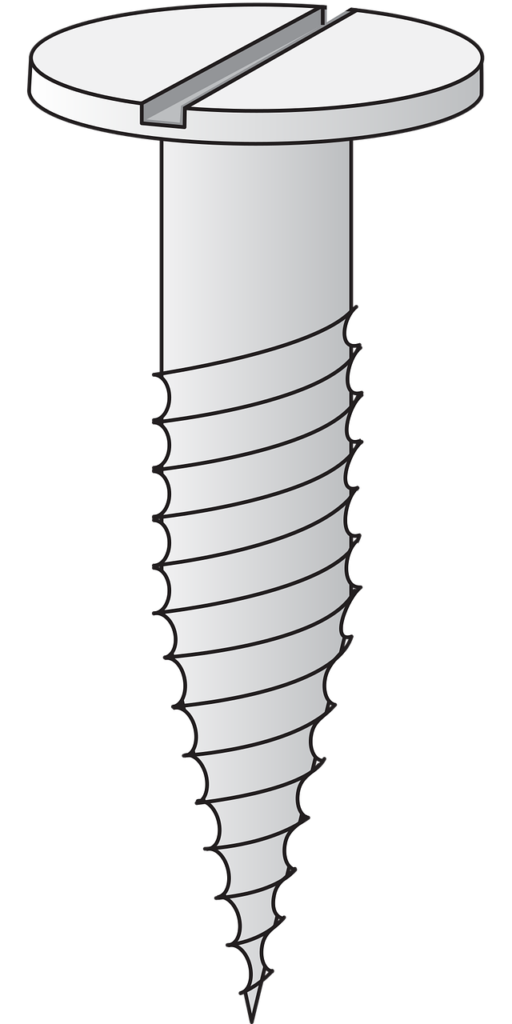Equilibrium is reached for a rigid body when it is either at rest or traveling at a constant speed without rotating or changing its direction of motion. When a rigid body is in equilibrium, it doesn’t spin or accelerate in any direction in response to outside torques or forces.
Types of Equilibrium of a Rigid Body
There are two main ways that a rigid body might reach equilibrium. The body is considered to be in perfect balance when both of these forms are met.
1.Translational Equilibrium: When all external forces add up to zero, or when there is no net force acting on the body, this happens. In terms of math, this can be expressed as:
F = 0
Here, F represents the vector sum of all forces acting on the body. If this condition is met, the body does not experience any linear acceleration, implying it will either stay at rest or move with uniform velocity.
2. Rotational Equilibrium: A body has to meet the rotational equilibrium criteria in addition to the translational condition. When all torques acting on the body about any axis add up to zero, this is the result. The expression in mathematics is:
τ = 0
Where τ is the sum of all torques acting on the body. When this condition is met, the body does not undergo any rotational acceleration, meaning it will not spin or change its rate of rotation.

Conditions for Complete Equilibrium:-
A rigid body to be in complete equilibrium, two essential conditions must met simultaneously,
1.The net force acting on the body should be zero (F = 0), ensuring translational equilibrium.
2. The net torque acting on the body should also be zero
(τ = 0), ensuring rotational equilibrium.
If either of above conditions is violated, the body will not be in equilibrium and will experience acceleration, either in translation or rotation.
Static and Dynamic Equilibrium:-
Equilibrium of a rigid body can be classified into two types based on whether the body is at rest or in motion:
1. Static Equilibrium: Rigid body is perfectly at rest in static equilibrium, which means its velocity is zero. A body in static equilibrium can be seen in a book resting on a table or in a bridge structure. In these situations, the total force and total torque applied to the item are zero. This is especially important for statics.
2.Dynamic Equilibrium: When a rigid body moves at a constant speed without rotating or accelerating, it is said to be in dynamic equilibrium. This suggests that the body experiences no net force or torque despite its mobility. A vehicle traveling at a steady pace on a straight road is an illustration of dynamic equilibrium.

Real-Life Examples of Equilibrium in Rigid Bodies
Bridges and Buildings: Static equilibrium is the goal of engineering while creating structures like buildings and bridges. To make sure the building stays stable under varying loads, they meticulously compute the forces and moments (such as the weight of vehicles or people).
Ladders Against a Wall: A ladder is in balance when it can be leaned against a wall without slipping. Weight of the ladder and the regular pressures exerted by the wall and the ground must be balanced against one other. To keep the ladder from turning, the torque produced by these forces must be zero.
Balancing on a See-Saw: An example of rotational equilibrium is a see-saw. The torques produced by two persons sitting at equal weights far from the pivot cancel each other out, keeping the see-saw balanced.

Stability of Equilibrium
1. Stable Equilibrium: Body is in stable equilibrium when even a slight perturbation allows it to revert to its initial position. For example, if pressed slightly, a ball that is sitting at the bottom of a bowl will return to its original position.
2. Unstable Equilibrium: A slight disturbance pushes the body farther from its starting point. Consider a ball that is balanced atop a hill; even a small push will cause it to roll away.
3. Neutral Equilibrium: In this example, the body maintains its altered position such as a ball on a flat surface even after being shaken.
Note:-
A basic idea that clarifies how objects can move steadily or remain immobile without changing their condition is the equilibrium of a rigid body. In a variety of disciplines, including engineering, architecture, and physics of stable systems and structures.
When a rigid body is in equilibrium, it is either at rest or traveling at a constant speed without experiencing any rotation or acceleration. A rigid body needs both net force and net torque applied on it to be zero in order to be in equilibrium.
For a rigid body to be in equilibrium, it must satisfy two conditions:
The net external force acting on the body must be zero
(F = 0) to ensure translational equilibrium.
The net external torque acting on the body must also be zero (τ = 0) to ensure rotational equilibrium.
When a body is in translational equilibrium, it has no linear acceleration and the total force of all external forces acting on it is zero. When all external torques add up to zero, the body is said to be in rotational equilibrium, which means it is not rotating or experiencing any rotational acceleration.
Yes, if a rigid body is moving at a constant speed without rotating, it can be in dynamic equilibrium. There is no acceleration in this since the net force and net torque exerted on the body are both zero.
Static equilibrium refers to a body at rest, with no motion, and both the net force and torque are zero.
Dynamic equilibrium refers to a body moving at constant velocity, where again, both the net force and torque are zero, preventing any acceleration.